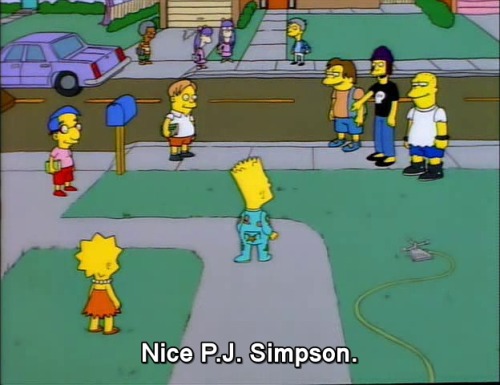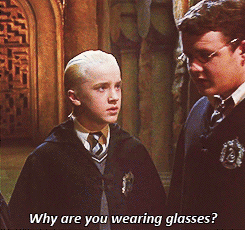Insecticides Mimic Melatonin, Creating Higher Risk Of Diabetes

Insecticides Mimic Melatonin, Creating Higher Risk of Diabetes
Synthetic chemicals commonly found in insecticides and garden products bind to the receptors that govern our biological clocks, University at Buffalo researchers have found. The research suggests that exposure to these insecticides adversely affects melatonin receptor signaling, creating a higher risk for metabolic diseases such as diabetes.
The research is in Chemical Research in Toxicology. (full access paywall)
More Posts from Smparticle2 and Others










Woahh!!!



The Application of Sunblock in Visible and UV Light.
(lifepixel)
















In California’s Salinas Valley, known as the “Salad Bowl of the World,” a push is underway to expand agriculture’s adoption of technology. Special correspondent Cat Wise reports on how such innovation is providing new opportunities for the Valley’s largely Hispanic population. Watch her full piece here: http://to.pbs.org/2gLmEga





From the TV series “The life of Mammals”.
(The Telegraph)

Self-assembling nanoparticle arrays can switch between a mirror and a window
By finely tuning the distance between nanoparticles in a single layer, researchers have made a filter that can change between a mirror and a window.
The development could help scientists create special materials whose optical properties can be changed in real time. These materials could then be used for applications from tuneable optical filters to miniature chemical sensors.
Creating a ‘tuneable’ material - one which can be accurately controlled - has been a challenge because of the tiny scales involved. In order to tune the optical properties of a single layer of nanoparticles - which are only tens of nanometres in size each - the space between them needs to be set precisely and uniformly.
To form the layer, the team of researchers from Imperial College London created conditions for gold nanoparticles to localise at the interface between two liquids that do not mix. By applying a small voltage across the interface, the team have been able to demonstrate a tuneable nanoparticle layer that can be dense or sparse, allowing for switching between a reflective mirror and a transparent surface. The research is published today in Nature Materials.
Read more.
Dutch trains now all powered by wind energy

All Dutch trains have become 100% powered by electricity generated by wind energy, the national railway company NS has said, making it a world’s first.
One windmill running for an hour can power a train for 120 miles, the companies said. Dutch electricity company Eneco won a tender offered by NS two years ago and the two companies signed a 10-year deal setting January 2018 as the date by which all NS trains should run on wind energy. ‘We in fact reached our goal a year earlier than planned,” said NS spokesman Ton Boon, adding that an increase in the number of wind farms across the country and off the coast of the Netherlands had helped NS achieve its aim.
They hope to reduce the energy used per passenger by a further 35% by 2020 compared with 2005.
-
 jenericalname reblogged this · 8 years ago
jenericalname reblogged this · 8 years ago -
 psychology-sidekick reblogged this · 8 years ago
psychology-sidekick reblogged this · 8 years ago -
 human-ity liked this · 8 years ago
human-ity liked this · 8 years ago -
 ildenislav liked this · 8 years ago
ildenislav liked this · 8 years ago -
 namoooni liked this · 8 years ago
namoooni liked this · 8 years ago -
 kaykayeindbq liked this · 8 years ago
kaykayeindbq liked this · 8 years ago -
 pancakeconmiel reblogged this · 8 years ago
pancakeconmiel reblogged this · 8 years ago -
 lament-of-ajna liked this · 8 years ago
lament-of-ajna liked this · 8 years ago -
 eddieflat reblogged this · 8 years ago
eddieflat reblogged this · 8 years ago -
 eddieflat liked this · 8 years ago
eddieflat liked this · 8 years ago -
 smparticle2 reblogged this · 8 years ago
smparticle2 reblogged this · 8 years ago -
 sresurreccion liked this · 8 years ago
sresurreccion liked this · 8 years ago -
 supernano33 liked this · 8 years ago
supernano33 liked this · 8 years ago -
 sinapsis-release reblogged this · 8 years ago
sinapsis-release reblogged this · 8 years ago -
 sinapsis-release liked this · 8 years ago
sinapsis-release liked this · 8 years ago -
 anonymousknight10 liked this · 8 years ago
anonymousknight10 liked this · 8 years ago -
 cinflaverin liked this · 8 years ago
cinflaverin liked this · 8 years ago -
 rory6111 liked this · 8 years ago
rory6111 liked this · 8 years ago -
 toastmcroasty liked this · 8 years ago
toastmcroasty liked this · 8 years ago -
 thewavyeyebrow liked this · 8 years ago
thewavyeyebrow liked this · 8 years ago -
 thelunchablesclub liked this · 8 years ago
thelunchablesclub liked this · 8 years ago -
 sparkleclassandlattes liked this · 8 years ago
sparkleclassandlattes liked this · 8 years ago -
 revelationed reblogged this · 8 years ago
revelationed reblogged this · 8 years ago -
 neurosciencenews reblogged this · 8 years ago
neurosciencenews reblogged this · 8 years ago


